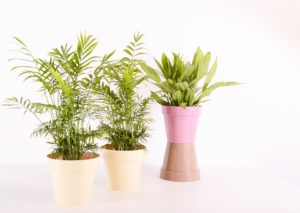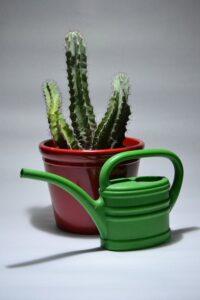Tips to Watering Indoor Plants

When it comes to giving house plants the right amount of water there is a misconception and because of this misconception, many house plants are suffering at the hands of their owners. “I killed my houseplants or I don’t have a green thumb” I have heard these statements on many occasions from people who seem to have tried hard and as best as they could to keep their house plants alive but in the end they acknowledge defeat.
While there are many components to keeping indoor plants alive the number one reason why house plants are dying is because of either overwatering or underwater, overwatering however being the main reason. If you are challenged with keeping your indoor plants alive because of not knowing the amount of water that should be given to them then you have come to the right place.
Check the Soil First
One of the most common mistakes that are made when it comes to watering indoor plants is not checking the soil. There is a mistaken belief t0 give plants water no matter the amount. While plants need water to survive to much water can do more harm than good especially if the soil is saturated already. Before watering your plants check the soil moisture by sticking your finger into the first top few inches of soil, a soil probe or a moisture meter can also be used to check your plant’s soil moisture level. These tools can be purchased from your garden center or plant nursery.
Use the Right Type of Water
While all water is the seam they are different, let me explain, tap water is known as hard water which is high in dissolved minerals largely calcium and magnesium. These salts can build up in the soil over time which will eventually lead to issues, chlorinated or rainwater is ideal because of its softness. If you have a filtering system this is is also ideal when watering indoor plants.
How to Water indoor plants?
When watering your plant’s water from the soil level, water slowly, this will allow the water to move evenly throughout the soil. Once the water reaches the top of the soil allow it to settle then pour again slowly until water comes out of drain holes.
A Water Jug

The best watering can or jug to water indoor plants is a can with a long narrow spout, this long spout will help to direct water into the soil. When watering with a watering can move the can in a circular motion this method will ensure that the entire plant is not only sufficiently watered but all of the root ball receives adequate water.
Watering from the Soil Vs Misting the Leaves
Based on the plant species will determine how you water your plants, while some plants require being watered from the soil there are others that thrive best when water from their leaves. These plants are known as epiphytes or air plants that grow on rocks and tree branches in this family of plants there are small ballmoss, spanish moss, tillandsia brachycaulos, tillandsia maxima, tillandsia cyanea, tillandsia ionantha mexican, tillandsia ionantha guatemalan, tillandsia cyanea, etc…
Plants have different watering needs
Every plant species have different watering needs, this is another common mistake when watering indoor plants. Know your plant watering needs and give them that amount no more no less. Some plants are drought-tolerant surviving on small amounts of water and there are plants that thrive on moderate water and then you have high maintenance plants that need to be watered more often to grow healthy.
Don’t let Plants Sit in Water
Once your plant is watered and the water comes out of the plant pot drain holes and settle in the saucer empty the saucer because if plants are allowed to sit in water will contribute to root rot, stagnant water can also carry a foul odor and may harbor mosquitos.
Plant Soil Aeration
Aerating the soil will help with the free circulation of water, proper airflow to the plant’s roots along with breaking up dry pockets of soil, it’s suggested to poke holes in the soil from time to time with a pencil or small stick.
The final word on how to water house plants
Caring for houseplants is a great way to bring nature indoors, house plants have so many benefits from purifying indoor air to beautifying even having a positive mental effect. What we have discussed will give you much success as your indoor garden thrives, these simple but yet effective tips will keep your indoor plants healthy and happy. So get to know the watering needs of your indoor plants and reap the benefits these plants bring.
About the author
Norman loves being in the garden, both at home and for his job....
he is 'Natures Little helper' being outdoors, growing his vegetables and flowers from an early age.
Now having spent over 22 years in the profession he want to give some of his knowledge to others...
his vast array of hints and tips you will find scattered over this site will help you no end growing plants in your garden.

I have always understood that precise watering of plants is necessary for their well being. But I am glad to have learned about other factors such as soil that also contribute to their growth. Having houseplants in the house always seems to bring a more upbeat atmosphere.
What would be the rule of thumb in regards to sunlight? Do certain plants need certain amounts of sunlight over other plants?
I am so happy to help, Yes some plants love full sunlight then there are those that prefer partial shade and there are others that thrive best in full shade. In general indoor plants should be placed near a south or west-facing window to receive bright indirect sunlight hope this helps.
Thank you very much for these helpful points. I learned a couple of things from your post. First, I will check the soil from here on. It gives us more information than I imagined. And I will also buy a water jug. It is very convenient to direct the direction water goes into our plants.
I am so happy to help and thanks so much for stopping by.